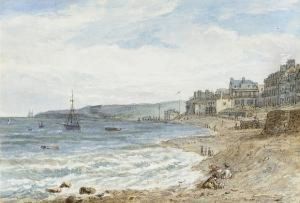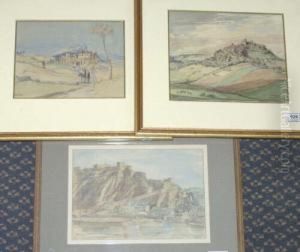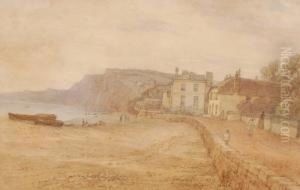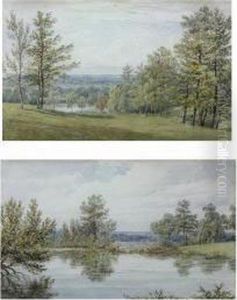Mary Smirke Paintings
Mary Smirke was an English painter and illustrator, born in 1779 in London, England. She was one of the four children of the renowned English painter Robert Smirke, who was a significant figure in the Royal Academy of Arts. Mary grew up in an artistic environment, which undoubtedly influenced her career path. Despite the limitations placed on women in the arts during the 18th and 19th centuries, Mary managed to carve out a space for herself in the highly competitive and male-dominated world of art.
Mary Smirke's work primarily consisted of illustrations and miniature paintings, a genre that was particularly popular among female artists of the time. Her style was noted for its delicate detailing and the gentle rendering of her subjects, which often included scenes from literature and daily life. This choice of subjects was both a reflection of her personal interests and a savvy adaptation to the market's demands, which favored such themes for their decorative appeal.
One of her most significant contributions to the art world was her illustrations for an edition of Miguel de Cervantes' 'Don Quixote,' which was published by her father. Her work on this project showcased not only her artistic talent but also her ability to engage deeply with literary material, bringing the characters and scenes to life in a way that complemented the text beautifully.
Despite her achievements, Mary Smirke's career was somewhat overshadowed by the prominence of her father and her brothers, all of whom were also involved in the arts to various extents. Nevertheless, her contributions have been gradually recognized and appreciated over time, particularly in the context of the study of women's roles in the art world during her lifetime.
Mary Smirke lived through a period of significant change in both the art world and society at large, witnessing the transitions through the Georgian and into the Victorian era. She remained active in her field until her later years, continuing to produce work that was admired by her contemporaries. Mary Smirke passed away in 1853, leaving behind a legacy that, while perhaps not as widely recognized as that of her male relatives, is nonetheless an important part of the history of women in art.



